Xiaomi Steps Up AI Integration in Earphones Amidst Anticipation for AI Glasses
![]() 03/02 2025
03/02 2025
![]() 690
690
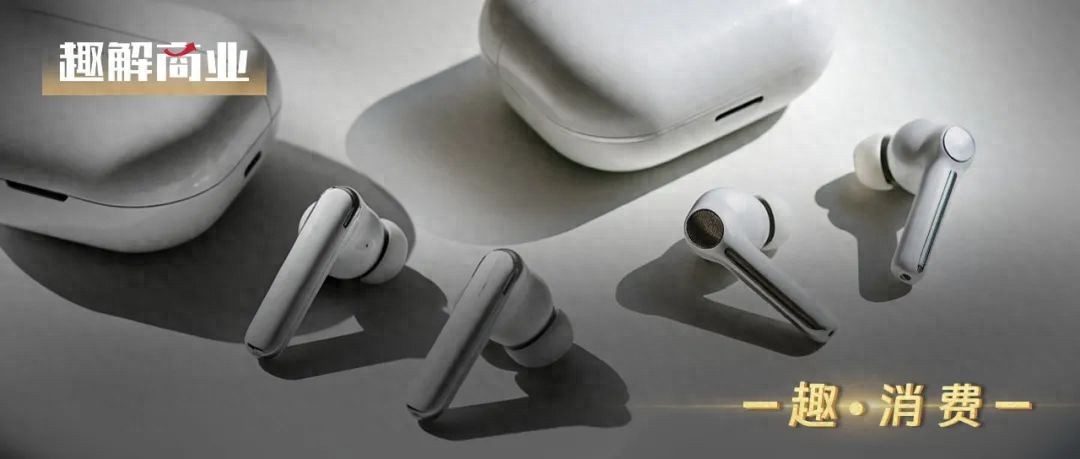
After integrating AI, earphones have seen a surge in popularity.
"Stock price soared then closed down," "Mr. Lei's 10-minute billionaire experience,"... Xiaomi has been in the limelight recently.
However, amidst the focus on Xiaomi's stock price and Lei Jun's wealth, the company's high-end product launch event has garnered more attention these days. On the evening of February 27th, Xiaomi unveiled the Xiaomi 15 Ultra and Xiaomi SU7 Ultra, alongside a range of high-end products including cars, laptops, and central air conditioners, hailed by fans as a "tech Spring Festival Gala".
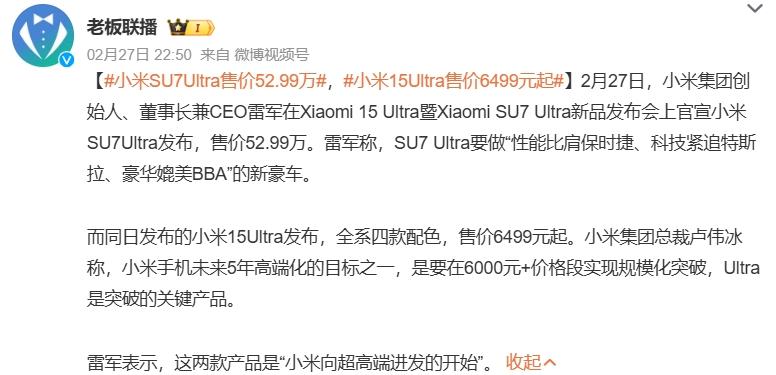
Image source: Weibo screenshot
Among the star-studded lineup, the Xiaomi Buds 5 Pro earphones might have seemed relatively "unassuming"; however, Xu Fei, Vice President of Xiaomi Group, dedicated considerable time to introducing this TWS earphone.
At the event, Xiaomi unveiled the Xiaomi Buds 5 Pro and Xiaomi Buds 5 Pro Wi-Fi edition earphones. The Xiaomi Buds 5 Pro comes in two colors—Snow Mountain White and Titanium Gold—priced at 1299 yuan; the Xiaomi Buds 5 Pro Wi-Fi edition is only available in Phantom Black, priced at 1499 yuan; both are currently on sale.
Tech bloggers have already gotten their hands on this latest model. One reviewer mentioned that the Xiaomi Buds 5 Pro Wi-Fi edition weighs 5.6g per earphone, features a versatile design, and causes no ear discomfort even with prolonged use; the charging case has a black semi-transparent design, which is aesthetically pleasing but prone to fingerprints.
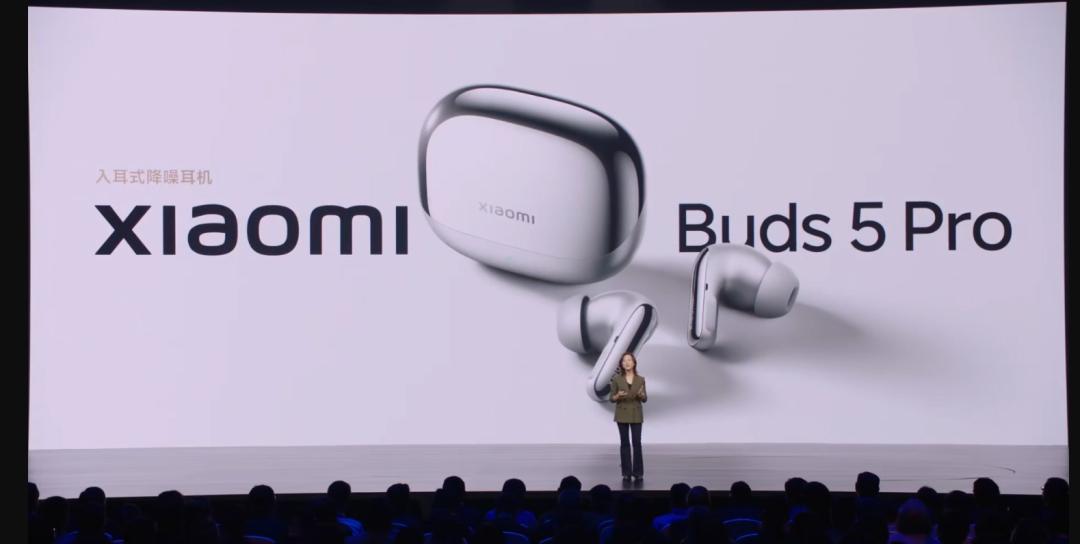
Image source: Weibo screenshot
Sound quality and noise reduction were emphasized at the launch. According to "Qujie Shangye", the Buds 5 Pro is equipped with Qualcomm's flagship Snapdragon S7 audio platform for the first time; Xiaomi's Acoustics Lab collaborated with the Harman Golden Ears team to fine-tune the Xiaomi Buds 5 Pro series. Xiaomi President Lu Weibing mentioned that this noise-canceling earphone would be Xiaomi's best-sounding earphone ever and undoubtedly the best under 4000 yuan.
Furthermore, the deep integration of Xiaomi earphones with Xiaomi smartphones and smart homes enhances their value as an entry point into the all-scenario ecosystem.
However, many online consumers believe Xiaomi's pricing for this earphone is on the higher side. "I used Xiaomi Bud 4 Pro before, and the tuning and soundstage were not as good as Apple's. If Xiaomi Buds 5 Pro were priced at 799 or 899 yuan, I could understand, but at 1299 yuan, I'd consider other brands."
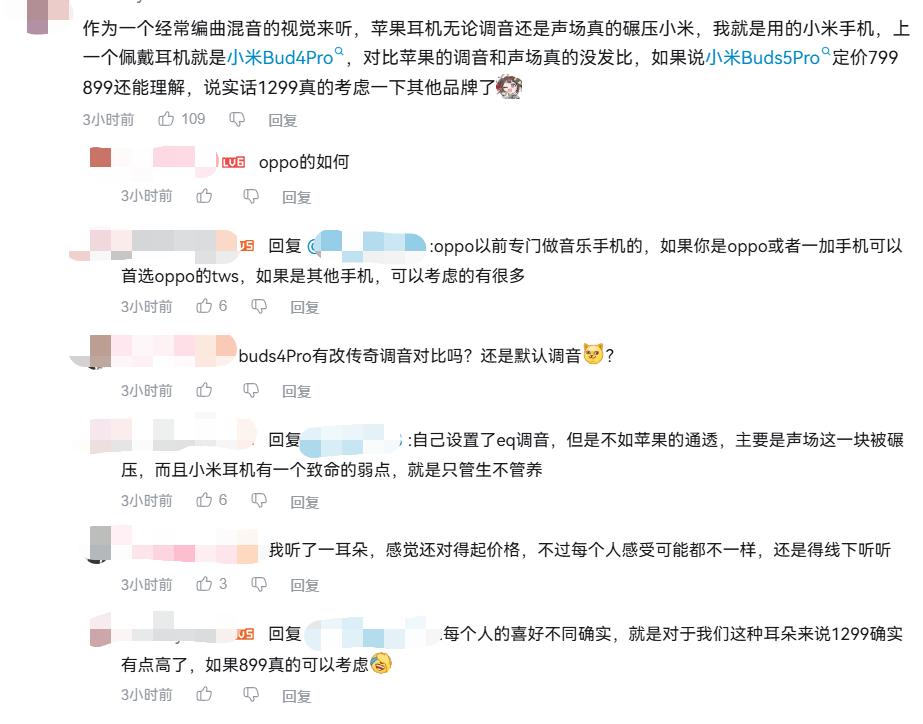
Image source: Bilibili screenshot
Besides sound quality, the upgrade in AI functions of the Buds 5 Pro has also attracted attention. According to "Qujie Shangye", Xiaomi hasn't launched many AI-integrated earphone products. Previously, Xiaomi Buds 5's AI functions were mainly recording and translation. The newly launched Buds 5 Pro can also serve as a portable mini dictaphone, converting recordings into text via the Xiaomi Earphones App, generating smart summaries with one click; it also supports phone recording and real-time simultaneous interpretation.
It's worth noting that while Buds 5 Pro emphasizes being an all-round AI earphone, it hasn't delved deeper into AI interactions beyond recording and translation. Many phone manufacturers, like Huawei and Samsung, have launched AI earphones with additional functionalities; Huawei's AI earphones, for instance, can activate the "Xiaoyi" assistant for navigation, setting alarms, weather inquiries, and itinerary checks. Xiaomi's previously launched Redmi Buds 6 Pro can also activate "Xiaoai Classmate" via voice commands.
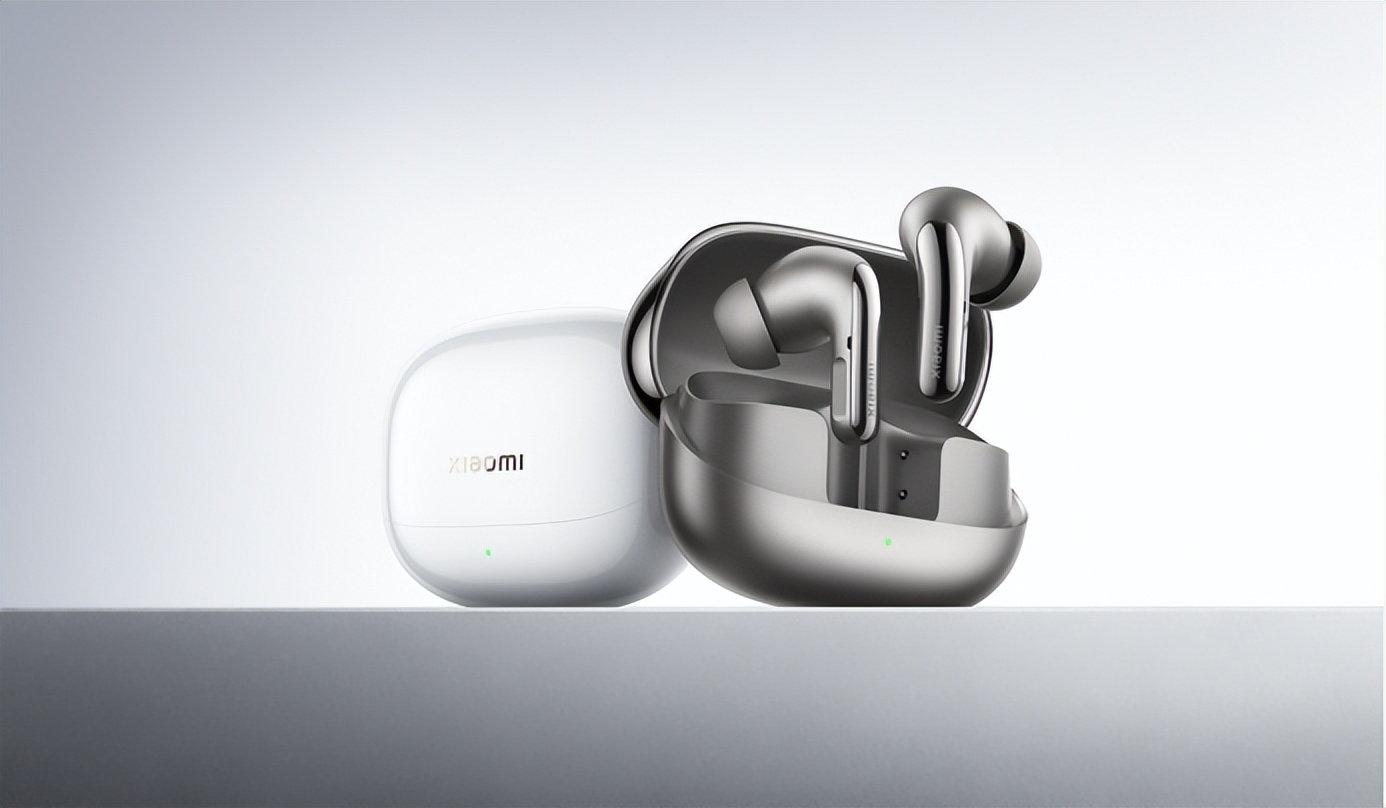
Image source: Xiaomi
An earphone industry insider said that phone manufacturers have significant advantages in AI-integrating earphones due to their control over operating systems. AI earphones from phone manufacturers can be deeply compatible with their phone systems, enabling quick pairing and intelligent connection; for example, Huawei's HarmonyOS allows earphones to seamlessly switch connections between phones, tablets, computers, and other devices, with audio playing freely across them.
As a voice interaction tool, earphones offer a wealth of usage scenarios, benefiting phone manufacturers in building their own ecological moat; moreover, major phone manufacturers usually possess self-developed large models and have invested heavily in technologies like speech recognition and natural language processing, making it easier to provide a superior user experience. As early as 2018, Lei Jun emphasized strengthening "interconnection" within the ecosystem, and earphones, as the most portable wearable device, will inevitably be a key target for Xiaomi's future "AI-ification".
The earphone industry has now reached a saturation point with few upgrade options left; however, with AI integration and additional functions like "dictaphone" and "translator", AI earphones are gaining popularity.
RUNTO data shows that sales of AI earphones on China's online e-commerce platforms achieved remarkable growth in August 2024, with sales expected to exceed 200,000 pairs for the entire year of 2024, representing a year-on-year increase of up to 488.7%.

Image source: RUNTO
2024 is being called the "Year of Earphones" by industry insiders, as companies have clearly focused on AI-ification and ecologicalization of earphones. Not only phone manufacturers but also internet companies and audio brands are rushing in to capitalize on this trend.
Audio brands like Philips and Cleer are inherently adept at creating earphone products. Most of these brands' AI earphones choose to integrate with large models from technology giants like Tencent and Baidu, targeting office scenarios including voice-to-text recording and real-time translation.
The selling points of these brands' earphones are similar to those of phone manufacturers' AI earphones, with no significant difference in AI voice interaction. According to "Qujie Shangye", the Cleer ARC 3 open earbuds have already sold over 10,000 units on Taobao and JD.com.
Compared to audio brands, internet companies' AI earphones have a more prominent AI assistant presence. Baidu's Xiaodu G108 earphones can be connected to the Xiaodu APP; ByteDance's Ola Friend, launched last year, integrates the Doubao large model and is the only earphone that can activate the Doubao voice assistant.

Image source: Taobao screenshot
One of the main purposes of internet companies making AI hardware, besides their ecological strategy, is to find application scenarios for their large models. Last June, ByteDance stated that "the Doubao business is committed to exploring integration with smart wearable devices, aiming to provide users with a more natural and convenient interactive experience." Besides earphones, glasses are also a hardware carrier that ByteDance aims to deploy Doubao on.
A consumer electronics investor believes that AI earphones can cultivate users' daily awareness of using AI; by conversing directly with AI through earphones, users can free up their hands and increase efficiency. According to "Gongyan Industry Consulting" predictions, from 2024 to 2028, the market size of China's AI smart earphone industry is expected to grow from 7.3 billion yuan to 164.6 billion yuan, with a compound annual growth rate of 117.8% during this period.
The popularity of AI earphones will continue this year, but there are differing views within and outside the industry on how long this product can remain hot.
Limited by factors like size, the computing and storage capabilities of AI earphones are very limited. Wang Sheng, partner at InnoAngel Fund, once said that AI glasses can acquire more information than AI earphones and possess a sense of co-presence, capable of carrying more complex functions, so he is more optimistic about the development of AI glasses.
Luo Xuan, co-founder of RWKV, previously told "Leifeng.com" that compared to finger operation, pure voice interaction is a more difficult, more energy-consuming, and privacy-leaking task; moreover, in human history, finger operation tools appeared earlier than language, so he is more optimistic about the mode of AI glasses and finger + voice.
It's worth mentioning that there have been persistent rumors about "Xiaomi AI Glasses" before, and even before this launch event, there were reports that Xiaomi would announce relevant information about Xiaomi AI Glasses, including appearance, functions, and even price, at this event; however, the event made no mention of Xiaomi AI Glasses.
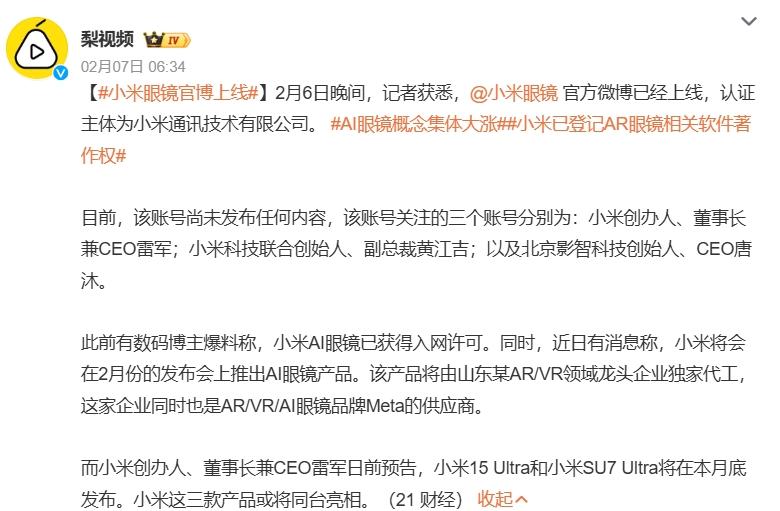
Image source: Weibo screenshot
This time, Xiaomi's release of Buds 5 Pro has added another spark to the AI earphone market. Whether AI earphones can grow into a mainstay in the field of smart wearables through technological breakthroughs and scenario expansion remains to be seen; but it's certain that with competition from all sides, the story of AI earphones has only just begun.








